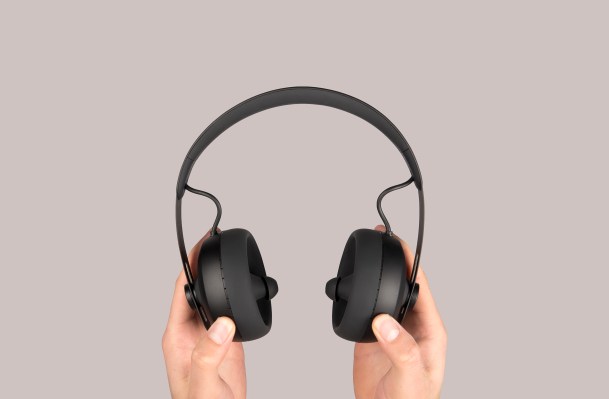I’ve been following consumer audio electronics company Nura with great interest for a few years now — the Melbourne-based startup was one of the first companies I met with after starting with TechCrunch. At the time, its first prototype was a big mess of circuits and wires — the sort of thing you could never imagine shrunk down into a reasonably sized consumer device.
Nura managed, of course. And the final product looked and sounded great; hell, even the box was nice. If I’m lucky, I see a consumer hardware product once or twice a year that seems reasonably capable of disrupting an industry, and Nura’s custom sound profiles fit that bill. But the company was unique for another reason. A graduate of the HAX accelerator, the startup announced NuraNow roughly this time last year.
Hardware as a service (HaaS) has been a popular concept in the IT/enterprise space for some time, but it’s still fairly uncommon in the consumer category. For one thing: A hardware subscription presents a new paradigm for thinking about purchases. That is a big lift in a country like the U.S., which spent years weaning consumers off contract-based smartphones.
That Nura jumped at the chance shouldn’t be a big surprise. Backers HAX/SOSV have been proponents of the model for some time now. I’ve visited their Shenzhen offices a few times, and the topic of HaaS always seems to come up.
In a recent email exchange, General Partner Duncan Turner described HaaS as “a great way to keep in contact with your customers and up-sell them on new features. Most importantly, for startups, recurring revenue is critical for scaling a business with venture capital (and will help appeal to a broad set of investors). HaaS often has a low churn (as easier to put onto long-term contracts).”
The upside for consumers is clear: You don’t pay for everything all up front and you’re freer to experiment with new devices in ways you wouldn’t have been otherwise. This is especially important in a world where the brick-and-mortar experience was increasingly rare, even before retail ground to a halt courtesy of COVID-19. There’s also a clear appeal for those who are inclined to frequently upgrade devices.
“If it’s providing continuous value, then it should be worth paying for,” Y Combinator Partner Eric Migicovsky tells TechCrunch. “If not, stop using it and move on! It also is more sustainable: Hardware these days requires a lot of software to work, and the development and maintenance of that software costs money. Companies that have a continuous source of revenue will be able to continue to improve their product offerings through software updates.”
In a 2018 study, analysts Parks Associates noted a potential hurdle. “While a consumer reluctance to pay subscription fees is well-documented, HaaS models may get more traction where more value can be offered at less financial risk to the consumer. The challenge is to create a service bundle with clear value that consumers find attractive. Consumers will pay for services that they perceive as valuable and complete tasks that they cannot or prefer not to do themselves.”
Consumer opinions toward subscription services has shifted in recent years. Another knock-on effect of the pandemic is the fact that many of us are currently paying monthly subscription fees to different media platforms than we anticipated. Ten or more years ago, I generally recoiled at the idea of licensing music instead of buying it outright: Today, Spotify is my go-to for music, for better or worse. And Netflix/HBO Max/Hulu/et al. are where I go for TV and movies. Models change and we adapt.
The models will certainly have to be hammered out to see what ultimately appeals most to consumers. NuraNow, for instance, launched with three tiers:
- $9 per month with an up-front fee of $100.
- $12 per month with an up-front fee of $30.
- $15 per month with no up-front fee.
It’s since defaulted to the first.
There will certainly be some growing pains. “Founders will need to find extra capital to fund inventory with a delayed ROI, and there is extra pressure to make sure that the product has fantastic market-fit or it is all too easy to cancel, which can be very costly,” said Turner. “There is also additional cost and complexity in ‘digital repression,’ i.e., switching off hardware which is not being paid for, as well as getting it back.”
Ultimately, many hardware startups appear to believe the model is a net positive.
Lemnos Labs Partner Eric Klein said there’s “no pushing required” when it comes to getting startups interested in the model.
“I see startups using this more and more frequently,” Klein told TechCrunch. “Innovative consumer hardware developed by startups often costs more initially. It’s a simple matter of higher components costs (BoM) associated with the initially low sell-through plus startups focusing on cost reduction later in their product timelines. If you can make that innovative, exciting product more approachable from a cost perspective to more potential buyers, why wouldn’t you?”
